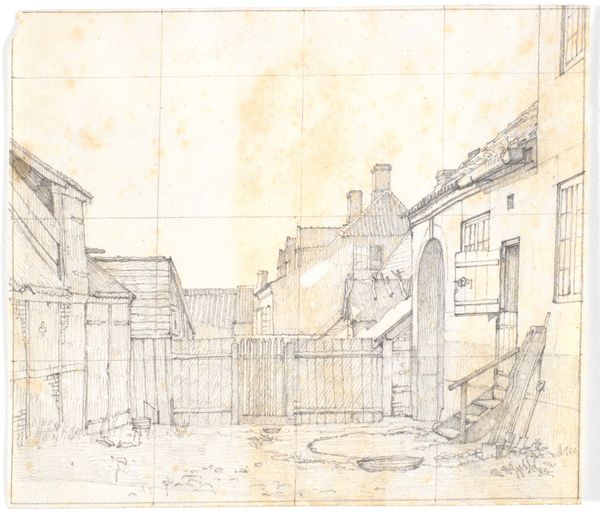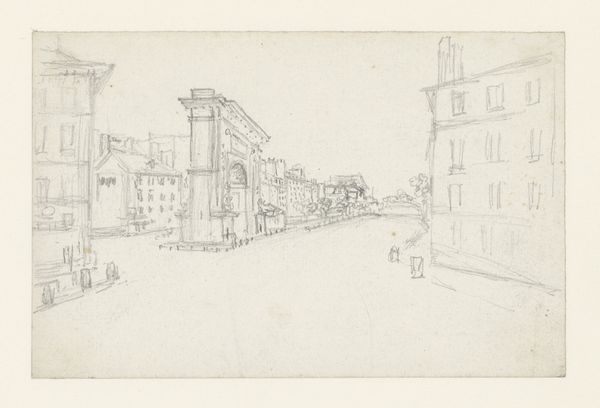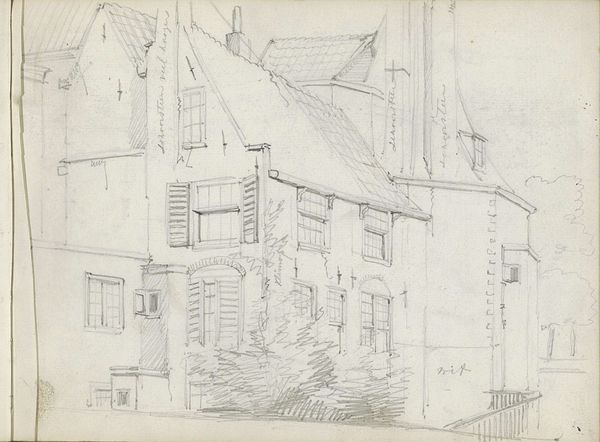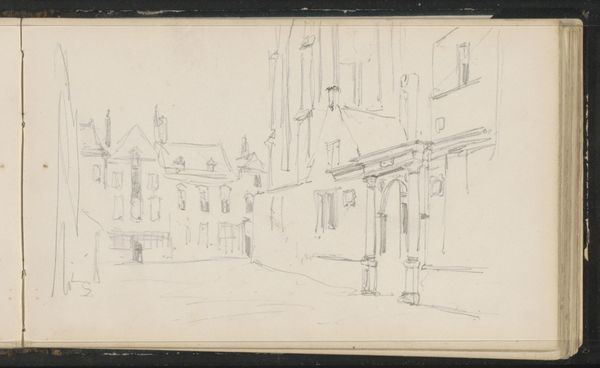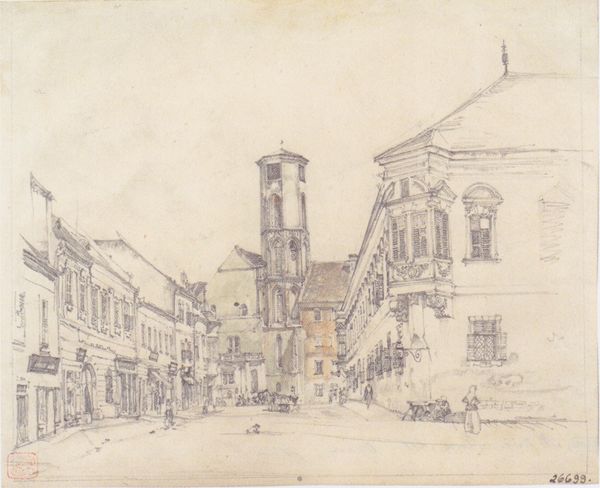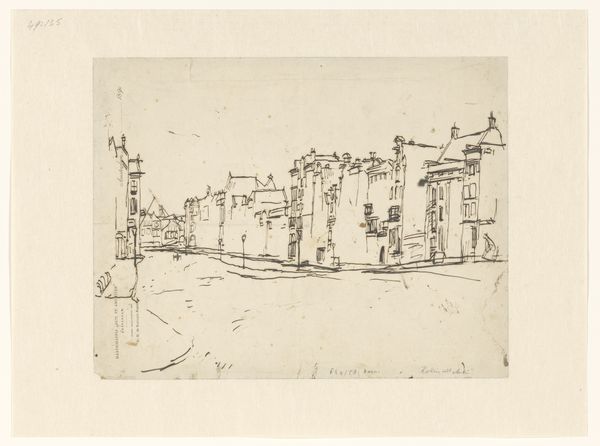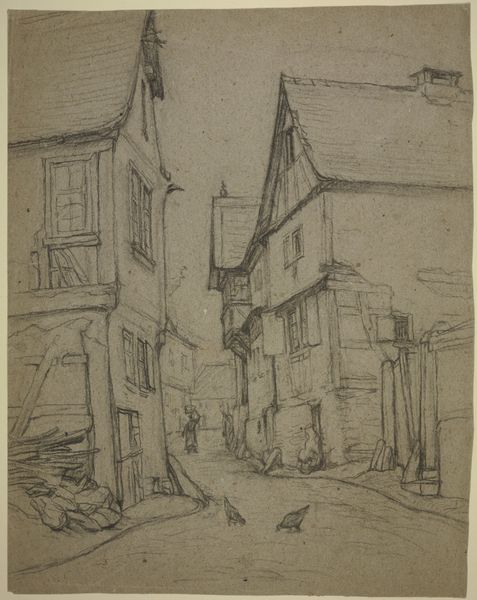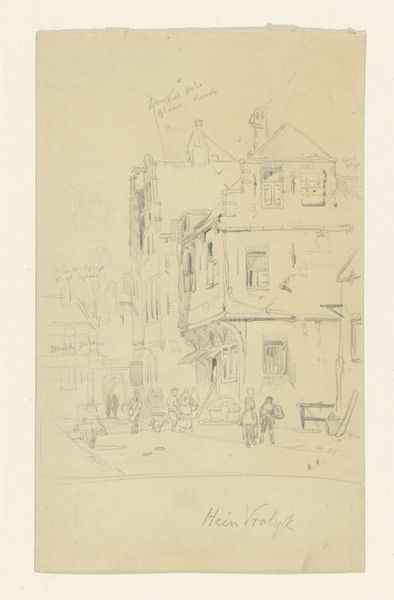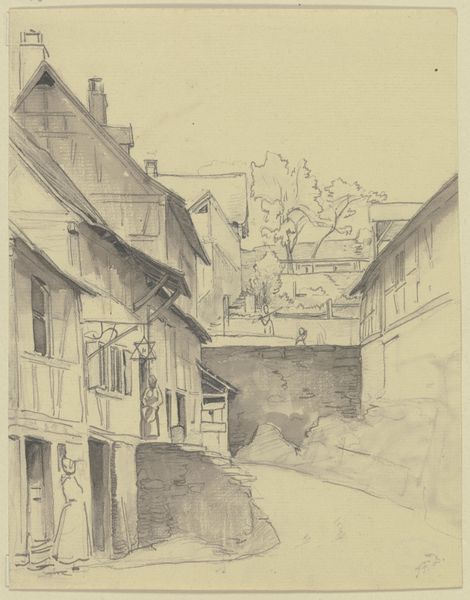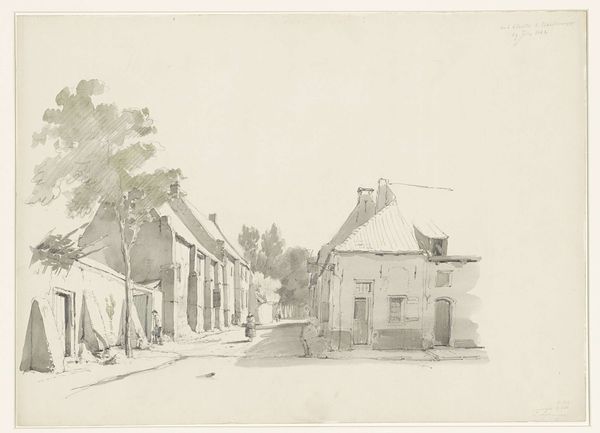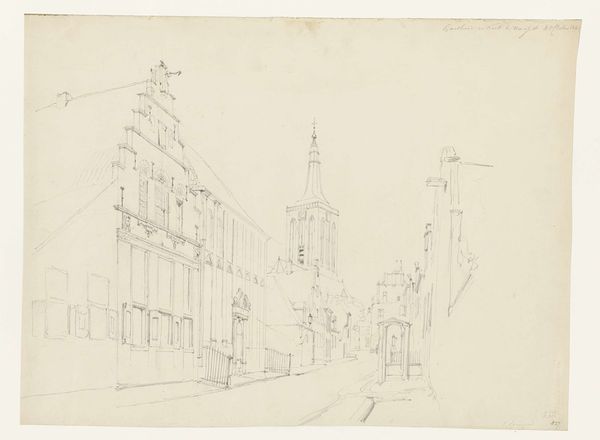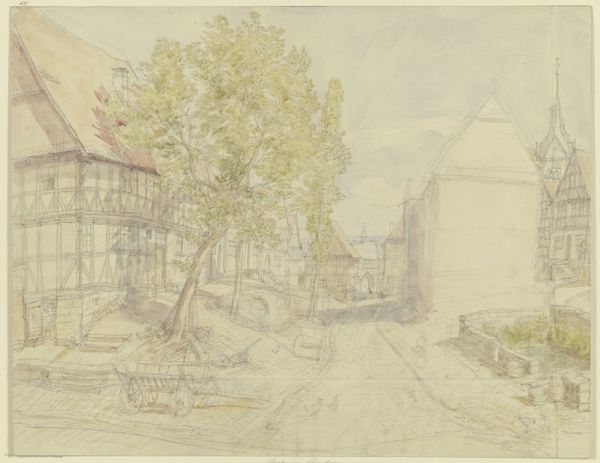
drawing, pencil
#
drawing
#
landscape
#
etching
#
pencil
#
architecture drawing
#
cityscape
#
realism
Dimensions: height 154 mm, width 196 mm
Copyright: Rijks Museum: Open Domain
Curator: We’re looking at Frederik Hendrik Weissenbruch's “Dorpsstraat,” a drawing in pencil and etching from sometime between 1838 and 1887. What strikes you first about it? Editor: The delicacy. It feels tentative, a whisper of a place. The greyscale adds to this sense of muted reality, as if it is emerging from a dream. Curator: Given the period, this scene likely captures a significant moment in urbanization and the negotiation of rural-urban identities. The composition hints at the transition many Dutch villages were undergoing, the Dorpsstraat acting as a microcosm of broader social and economic shifts. Editor: I see what you mean. But focusing purely on the formal aspects, notice how Weissenbruch masterfully uses lines to create depth, leading our eye to the vanishing point. The stark contrast between the buildings and sky further emphasizes the linear structure of the composition. It’s less about narrative and more about the visual experience, the balance of form. Curator: And who inhabits this space? What's the positionality of the individuals he captures? Considering his class and social standing, how might he be observing the interactions and labor within this emerging cityscape, especially those whose work sustains these burgeoning centers? These observations offer insight into gender roles and socio-economic stratification. Editor: Interesting point, but wouldn’t you agree that there's a strong interplay of light and shadow which emphasizes the inherent flatness of the picture plane? The materiality, the pure lines of the architecture; for me, they articulate their own kind of narrative of space and form. It feels deeply concerned with representing its own structure. Curator: By reading against the grain, we uncover not only Weissenbruch's individual interpretation but also society’s relationship to rapid development, revealing stories often glossed over in celebratory accounts of progress. Editor: Perhaps. But even in its seeming simplicity, Weissenbruch delivers an arresting orchestration of lines. Curator: Exactly, it leaves us pondering about more than just its aesthetics. Editor: I’m taking with me its subtle strength—such impactful lines from what seems to be effortless drawing.
Comments
No comments
Be the first to comment and join the conversation on the ultimate creative platform.
